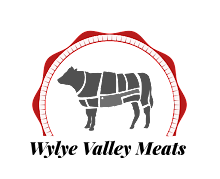Brewing
Michael J Lewis & Tom W Young
1995, PB, 260pp
Chapman & Hall
Chapman & Hall
£43.34 delivered from Amazon
Reviewed May 2011
This is a review of the first edition of this book. The second edition (larger at 408pp) is currently available but I don't have that in my library. Yet.
I am what you might call a technical home brewer. I don't brew in pots and pans in the kitchen but have a permanent brewery and temperature controlled fermenters permanently set up in the garage, for instance. And I love the science stuff. I am also from the UK and most of the beers I brew are British in style. Trust me this is relevant to the review.
There are a lot of home brewing books out there including any number of basic how-to-brew titles and a smaller number of more advanced guides. These vary in quality from the outstanding to total rubbish. There are also a surprising number of professional brewing text books. Most of these are of limited use to home brewers or microbrewers because they deal with modern industrial brewing using techniques and methods out of our price or technological range. A smaller number do have useful information, at least in part. The greater proportion of English language brewer's books of both persuasions are US in origin and brew with a US attitude.
“Brewing” doesn't fit into any of these groups. Michael Lewis is based in California and Tom Young in Birmingham, UK. Lewis gained his PhD Birmingham University in the UK, however. The book seems to be aimed at small scale commercial brewers and has a distinctly British attitude to brewing, and this is reinforced by the use of litres, celsius and kilograms alone in the body of the text. This is a pretty unusual combination and makes it a valuable book in itself, especially to us Brits.
Now lets be clear: this in not a let's-start-brewing book. It assumes a level of technical and, especially scientific, knowledge. If you didn't study science to advanced school or, better, college level you are going to struggle. That's not a criticism of the book, just a reflection of who it is aimed at. As a random example you need to comfortable with stuff like this: “Carboxypeptidases survive kilning but endo-ß-glucanases are much more heat labile. There is a danger therefore that if ß-glucanolysis is incomplete in malting, ß-glucans could dissolve in mashing under the influence of a carboxypeptidase (called solubilase) with insufficient endo-ß-glucanase to reduce its viscosity.” See what I mean?
To be fair, the authors say in the preface, “it is our intention and our hope that this book will provide a useful and practical grounding in the fundamentals of brewing science and the practice of brewing.” It is significant that they put science before practice because that is the way the book is arranged.
The book is logically organised and follows the brewing process from beginning to end. After a simple Overview of the Brewing Process in proceeds to Basic Chemistry for Brewing Science. In many ways this is the most important chapter in the book and its 28 pages need careful reading. Although the chapter starts with the basics of water chemistry within the first paragraph it is clear that the authors concept of basic assumes the reader understands terms such as “element”, “valence”, and “Lewis structure”. If you don't it would be best to put the book down and get hold of a science primer because without some underpinning knowledge this chapter and most of the rest of the book is going to be meaningless.
If you pass the Basic Chemistry Test the rest of the book lies before you. All the usual stages are covered from a scientific point of view although at the same time the focus is on small-scale, low technology brewing. For instance the chapter on Mashing Technology devotes most of its description of the mashing process to simple infusion mashing although temperature-controlled mashing, decoction mashing, double mashing, lauters and mash filters are covered. The authors make the point that “infusion mashing is particularly attractive in small breweries because the vessels are simple and cheap, and easily scaled to their low output.”
The rest of the process is examined in similar vein. There are a large number of line drawings, graphs, tables, and chemical pathways illustrated throughout the book including such delights as the Embden-Meyerhof-Parnas pathway, the Burton union sytem of traditional fermenters, the design of a “python”, and the function of a beer engine. Sadly the authors couldn't resist the temptation to include that really dodgy tongue map of flavour sensing areas. Mind you the accompanying text is a lot better.
I particularly like the chapters of yeast and fermentation. This, of course, covers the biochemistry of the process in some detail, as you would expect. Yeast culturing and propagation is considered. The delights of long term yeast storage are discussed (clearly beyond most home brewers or microbrewers) but this is balanced out with much more practical discussions of cropping yeast for re-use and the use of dried yeast (even though there will be those rolling there eyes at the very thought). Although not a laboratory manual simple laboratory methods of practical application are discussed such as storage yeast on agar and yeast viability counts using a light microscope and haematocytometer.
“Brewing” balances on a wire between a scientific treatise on the brewing process and a practical how-to-do-it manual. It pulls this off very well. If is a, relatively small, guide to the brewing process which contains most of the information a home- or microbrewer will ever need. It certainly deserves a place on the bookshelf of any brewer who has the scientific background to digest it. Recommended.
Who should buy “Brewing”?
Starting out home brewer: step away from the book.
Advanced home brewer: yes, if you have the science.
Microbrewer: why haven't you got it already?



No comments:
Post a Comment